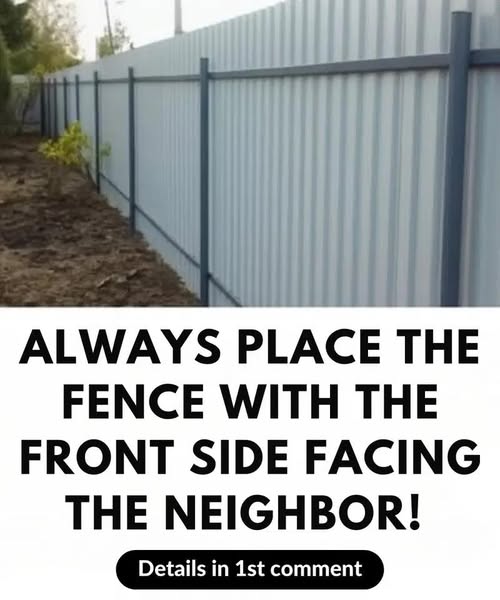The rails can face the azaleas; the smooth pickets should greet the street and the yard next door. It feels backward—after all, you paid for the lumber, you dug the post holes, you’ll stain the cedar every third summer—but that small reversal is the cheapest insurance you can buy against side-eye, code-violation letters, and the slow erosion of property value. Most city ordinances and HOA covenants already command it: the “finished” side (no exposed two-by-fours, no visible screws) must point outward, the same way a handshake turns your palm up to show you carry no weapon. Ignore the rule and you may be ordered to tear down and rebuild at your own expense, this time with the correct face showing.
Beyond statutes, there’s the softer currency of goodwill. When your neighbor glances out the kitchen window, what he sees is your public signature: tidy horizontal planks or dog-eared pickets painted the color of fresh cream. That view whispers, “I care about your morning coffee moment as much as my own privacy.” Turn the framing side out and the message flips to indifference, even hostility—an unfinished shrug that says, “My backyard ends at the property line; your enjoyment is not my concern.” Over years, that tiny visual slight calcifies into the kind of feud that ends with security cameras angled like rifles and garbage cans left at the curb an extra day out of spite.
A double-sided “good-neighbor” fence erases the dilemma entirely—boards alternate front and back on every panel—but it costs more up front and still benefits from a conversation before the first post is set. Talk across the property line early: share the design, the height, the stain color, the maintenance schedule. Invite your neighbor to split the bill if the old chain-link is leaning equally on both lots; most people will happily trade half the cost for half the future responsibility and a view they can live with. When the time comes to restain, knock again and offer the same color or a complementary tone. The fence will last longer if both sides breathe the same humidity and absorb the same UV rays, and your wallet will feel the shared weight.
Curb appeal is the final dividend. A street-facing fence with the smooth side out frames your house like a well-chosen picture frame, adding perceived square footage to the entire block. Real-estate agents swear prospective buyers register the detail subconsciously: good side out equals house loved and maintained; rails out equals project list and weekend labor. The math is simple—spend an extra hour flipping boards during construction and you may recoup thousands when the sign goes up.
In the end, a fence is more than a boundary; it is a handshake set in cedar or vinyl. Face the pretty side out, and you build not just a barrier but a bridge—one picket at a time.
